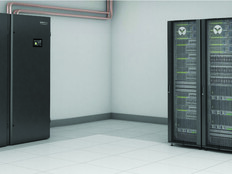“We didn’t try to optimize and move at the same time. That’s very difficult to do,” he says.
The approach allowed for a rapid shift to commercial cloud. DOJ has 36 cloud providers, including Microsoft Azure, one of its largest, Klimavicz says. DOJ uses on-premises private clouds for its most sensitive data.
By the end of fiscal year 2020, DOJ will have just three data centers remaining from its original stock of 110. The final 11 closures are the most difficult. “It’s a long journey, and a lot of things come up along the way,” says Klimavicz.
He credits strong communication with helping the department move forward: “We have weekly meetings on this topic with different stakeholders. When you’re dealing with a large agency with a lot of suborganizations, you can’t communicate enough.”
How to Achieve Data Center Optimization
There’s no one path to data center optimization, says Carol C. Harris, director of IT acquisition management issues at GAO and DCOI audit lead.
“There are challenges to defining best practices that work at large, federated departmental agencies that would also be practical at smaller, more centrally managed agencies,” she says.
It is possible to define general best practices, she adds. The GAO, during the audit and through surveys sent to successful agencies, found six:
- Obtain executive leadership support
- Use experience and lessons learned to refine consolidation planning
- Boost use of cloud and shared services
- Emphasize closing data centers in line with OMB goals
- Increase the use of virtualization
- Employ organizationwide communications
USDA Embraces Virtualization as It Closes Data Centers
Like DOJ, USDA was highlighted in the GAO report for its success in closing data centers, taking down 2,233 of its 2,237 nontiered data centers and 29 of its 35 tiered data centers.
“We no longer have agency-specific data centers,” says Ed Reyelts, associate CIO for USDA’s Digital Infrastructure Services Center. “That workload has been consolidated to the department’s two enterprise data centers or to the commercial cloud. We do have special-purpose labs, and remote offices for local file/print services.”
Virtualization was a big part of USDA’s DCOI strategy. “It allowed us to rightsize and ingest large workloads from the closing data centers, all while scaling the virtualization infrastructure already present within our department’s private cloud for significant economies of scale,” says Reyelts.










